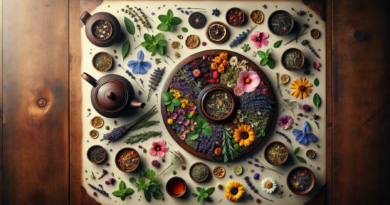Specialty Coffee Roasting
Discover the world of specialty coffee roasting, where artisans transform green coffee beans into aromatic and flavorful brews. This captivating craft combines meticulous attention to detail with a passion for sourcing and roasting only the finest beans. With flavors ranging from fruity and floral to bold and chocolatey, specialty coffee roasting offers a unique and immersive experience for coffee enthusiasts. From the sourcing of ethically grown beans to the careful roasting process, every step is infused with expertise and dedication to delivering a truly exceptional cup of coffee. Indulge your senses as you embark on a journey through the art of specialty coffee roasting.
Specialty Coffee Roasting
Definition and Importance
Specialty coffee roasting refers to the process of roasting coffee beans to achieve optimum flavor and aroma. It involves carefully selecting high-quality beans, using specialized roasting equipment, and implementing precise techniques to bring out the unique characteristics of each coffee. The art of specialty coffee roasting has gained significant importance in the coffee industry, as it allows coffee enthusiasts to experience the full potential of coffee beans and explore a wide range of flavors.
The Roasting Process
The roasting process is a crucial step in coffee production that transforms green coffee beans into aromatic, flavorful, and ready-to-brew beans. It involves subjecting the beans to heat, which causes complex chemical reactions that bring out the desirable flavors and aromas. Roasting also removes the moisture content from the beans and develops the characteristic brown color.
During the roasting process, the beans go through various stages, including drying, browning, and development. Each stage is carefully monitored to ensure optimal flavor development without over-roasting or under-roasting the beans. By controlling factors such as temperature and time, roasters can create a range of roast profiles and flavor profiles that cater to different preferences.
Different Roasting Levels
Specialty coffee roasting offers a wide range of roast levels, each with its unique flavor and aroma characteristics. The different roasting levels include light roast, medium roast, medium-dark roast, and dark roast.
Light roast coffee is roasted for a shorter duration, preserving the natural flavors and acidity of the beans. It typically has a lighter body, higher acidity, and more pronounced fruit or floral notes. Medium roast coffee undergoes slightly more roasting, resulting in a balanced flavor profile with moderate acidity and a fuller body. Medium-dark roast coffee has a richer flavor and darker color, with slight caramelization of sugars.
Dark roast coffee is roasted for an extended period, leading to a bold, smoky profile with reduced acidity. This roast level is characterized by prominent chocolate or roasted flavors and a heavy body. Each roasting level offers a unique taste experience, allowing coffee lovers to explore their preferences and discover new flavors.
Roast Profiles and Flavor Development
Roast profiles play a crucial role in determining the final flavor and aroma characteristics of the coffee. A roast profile outlines the temperature and duration at which the beans are roasted, influencing the development of flavors and acidity.
During the roasting process, the beans undergo physical and chemical changes. The Maillard reaction, which occurs between the amino acids and reducing sugars in the beans, contributes to the development of flavors, aromas, and the characteristic brown color. Acidity levels also change during roasting, with certain acids breaking down and others being created.
Roast profiles can be adjusted to highlight specific flavor notes or to achieve a well-balanced cup of coffee. Roasters experiment with different profiles to showcase the unique qualities of different coffee varieties and create a diverse range of flavors for discerning consumers.
Bean Selection and Sourcing
Bean selection and sourcing are fundamental aspects of specialty coffee roasting. Roasters focus on sourcing high-quality coffee beans from specific regions or farms known for producing exceptional coffees. They establish relationships with growers and cooperatives committed to sustainable farming practices, fair trade, and equitable relationships.
The selection process involves evaluating factors such as origin, variety, altitude, processing methods, and flavor profile to ensure the beans meet their quality standards. Specialty coffee roasters prioritize beans with unique and desirable characteristics, enabling them to roast coffees with distinct flavors and profiles.
By carefully sourcing and selecting beans, roasters contribute to the sustainability of the coffee industry, support local farmers, and promote the preservation of unique and rare coffee varieties.
Roaster Equipment and Techniques
Specialty coffee roasters use advanced equipment and techniques to achieve precise and consistent results. Roasting equipment varies, but most commercial roasters have features like precise temperature control, gas or electric heating elements, and automated controls for airflow and drum speed.
Roasters use various techniques to manipulate the roasting process and create specific flavor profiles. These techniques include adjusting the airflow, fine-tuning the temperature, and implementing different roasting profiles. Some roasters also experiment with alternative methods, such as using cast iron pans or small batch roasters, to achieve unique flavors and enhance their craftsmanship.
Roast Time and Temperature
The roasting time and temperature significantly impact the flavor development and characteristics of the coffee. Roasters carefully adjust these variables to achieve the desired roast profile.
The temperature during the roasting process typically ranges from 350°F (177°C) to 500°F (260°C) and varies depending on the desired roast level. Higher temperatures and shorter roast times result in lighter roasts, while lower temperatures and longer roast times produce darker roasts.
Roasters closely monitor the temperature throughout the roasting process to ensure even heat distribution and to prevent scorching or uneven roasting. The roast time and temperature combinations are optimized to highlight the beans’ unique qualities and achieve the desired flavor profiles.
The Role of the Roastmaster
The roastmaster plays a vital role in specialty coffee roasting. They are responsible for managing and overseeing the entire roasting process, from bean selection to roast profile development. A skilled roastmaster understands the nuances of different coffee varieties, has a deep knowledge of roasting techniques, and possesses a refined palate to assess flavor profiles.
The roastmaster’s expertise lies in translating the coffee’s potential into a well-roasted batch that brings out the flavors and aromas desired. They make adjustments to roast profiles, monitor timing and temperature, and ensure consistency in every batch. The roastmaster’s knowledge and attention to detail contribute significantly to the overall quality of the roasted coffee.
Quality Control and Cupping
Quality control is a critical aspect of specialty coffee roasting. Roasters employ rigorous quality control measures to ensure consistency, detect defects, and maintain the desired flavor profiles. One common method used to assess coffee quality is cupping, a systematic tasting process.
Cupping involves tasting coffee samples from different batches or origin countries to evaluate their flavor, aroma, and overall quality. Roasters assess factors such as acidity, body, sweetness, and aftertaste. They compare the coffees and make adjustments to roast profiles or bean selection based on the cupping results.
By implementing stringent quality control measures, roasters maintain high standards of excellence, ensure consistency, and deliver exceptional coffee experiences to customers.
Trends and Innovations
Specialty coffee roasting is a dynamic industry that constantly evolves to meet the demands of coffee enthusiasts. Roasters and coffee shops embrace trends and innovations to offer unique flavor experiences and cater to changing consumer preferences.
Some current trends in specialty coffee roasting include single-origin coffee, direct trade, light roast profiles, and sustainable practices. Roasters experiment with new processing methods, such as natural or honey processing, to enhance flavor profiles. They also explore innovative ways to highlight flavor notes, like cold brew or nitro coffee.
Technology advancements have also contributed to the evolution of specialty coffee roasting. Roasters use data-driven approaches to fine-tune roast profiles, monitor temperature and airflow, and automate certain aspects of the roasting process. These innovations enable roasters to achieve greater consistency and precision in their craft.
In conclusion, specialty coffee roasting is an art form that brings out the best in coffee beans, offering a diverse range of flavors and aromas. Roasters play a crucial role in selecting high-quality beans, implementing precise roasting techniques, and ensuring excellent quality control. Through innovation and experimentation, the specialty coffee roasting industry continues to evolve, delivering exceptional coffee experiences to discerning consumers.




